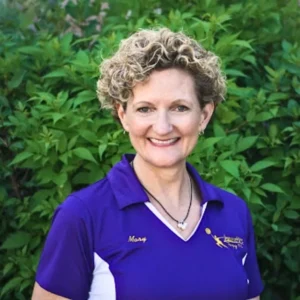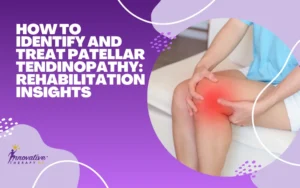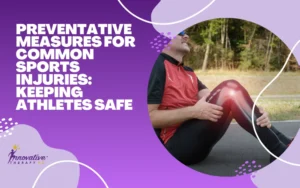When I first tore my ACL, I didn’t fully understand how serious the injury was. The pain, swelling, and feeling of instability in my knee made even basic movements feel impossible. As I researched more about ACL recovery, I quickly realized that a torn ACL isn’t just a temporary setback. It’s a long journey that affects your body, mindset, and daily life.
What helped me the most was following a structured rehabilitation plan. From pre-surgery preparation to post-op strengthening, each phase played a critical role in my healing. With the right exercises, equipment, and expert guidance, I slowly regained my strength and confidence step by step. Keep reading to discover the best recovery strategies that truly work.
Understanding ACL Injuries in Athletes

The anterior cruciate ligament (ACL) is one of the key ligaments that help stabilize your knee joint. It connects the thigh bone (femur) to the shinbone (tibia) and plays a crucial role in pivoting, turning, and changing directions. That’s why athletes are especially prone to ACL injuries, whether it’s during a quick cut on the field, an awkward landing from a jump, or even a sudden stop.
ACL injuries are common in sports like football, basketball, soccer, and skiing. For me, it happened while I was playing a pickup game of basketball. I heard a “pop,” felt my knee buckle, and instantly knew something was wrong.
A torn ACL isn’t just painful, It can completely disrupt your lifestyle, especially if you’re someone who’s active or athletic.
What Happens Right After You Tear Your ACL?
Once you tear your ACL, the symptoms usually appear immediately:
- A loud “pop” in the knee
- Rapid swelling
- Loss of range of motion
- Feeling of the knee giving out when putting weight on it
Here’s what typically happens next:
| Step | Action | Purpose |
|---|---|---|
| 1 | Initial Evaluation | Doctor checks joint stability and swelling |
| 2 | MRI or X-ray | Confirms ACL tear and other damage |
| 3 | Pre-surgery planning | Introduces “prehab” to prepare for surgery |
| 4 | Surgery (if required) | Reconstruction of the ligament using graft |
If the tear is complete or you’re planning to return to sports, surgery is usually the best route. However, your recovery starts before surgery even happens.
Why Early ACL Rehabilitation Matters
It might sound counterintuitive, but rehabilitation starts before the surgery. This is known as “prehab.” In the days or weeks before going under the knife, it’s critical to:
- Reduce inflammation and swelling
- Regain knee range of motion
- Start strengthening nearby muscles like quads and hamstrings
Doing this will help your body respond better post-surgery. From my experience, prehab made a massive difference. I had less pain, faster strength return, and was more confident entering physical therapy later on.
Pre-Surgery (“Prehab”) Best Practices
Here’s what my pre-surgery routine looked like:
- Quad Sets – Tighten the thigh muscle while keeping the leg straight.
- Heel Slides – Improve range of motion by sliding the heel back and forth.
- Leg Raises – Strengthen quads without bending the knee.
- Icing and Elevation – Reduce swelling and inflammation.
Pro Tip:Always work with a licensed physical therapist before surgery to avoid overdoing it and to ensure safe movements.
Post-Surgery ACL Rehab: The 4-Phase Approach
After ACL surgery, recovery is structured into phases. These phases helped guide my entire journey back to sports and normal life.
Phase 1: First 2 Weeks – Control Pain & Swelling
- Elevate the leg often
- Apply ice 3–4 times a day
- Start using crutches and wear a brace
- Begin gentle range-of-motion exercises
Phase 2: Weeks 2–6 – Regain Strength & Stability
- Discontinue crutches when walking becomes stable
- Begin leg press (with low resistance)
- Stationary biking for circulation
- Closed chain exercises for joint control
Phase 3: Weeks 6–12 – Advanced Strength & Coordination
- Introduce agility drills
- Begin bodyweight squats and balance boards
- Focus on proprioception (body’s ability to sense joint movement)
Phase 4: Months 3–6 – Return-to-Sport Training
- Add resistance to strength training
- Sports-specific drills (cutting, pivoting, jumping)
- Functional testing to determine readiness
ACL Recovery Exercise
| Phase | Exercises | Frequency | Purpose |
|---|---|---|---|
| Phase 1 | Heel slides, quad sets | 2x/day | Mobility & activation |
| Phase 2 | Stationary bike, leg press | 3–4x/week | Strength & endurance |
| Phase 3 | Balance board, step-ups | 4–5x/week | Coordination & agility |
| Phase 4 | Cutting drills, jump training | 5–6x/week | Sport-specific recovery |
Best Equipment for ACL Rehab at Home

If you’re doing rehab at home like I did, here’s what you’ll need:
Must-Have Tools
- Ice packs (for swelling)
- Resistance bands (strength training)
- Foam rollers (muscle recovery)
- Knee brace (support & protection)
Nice-to-Have Additions
- Balance board
- Mini trampoline
- Stationary bike
Having the right tools made it easier to stay consistent, especially on days I couldn’t visit the clinic.
The Mental Side of ACL Recovery
Recovery isn’t just physical. It’s mental, too. There were days I felt frustrated, especially when progress stalled. Fear of re-injury is real, and it can slow your return to full activity if you let it.
What helped me the most:
- Setting small, weekly goals
- Celebrating milestones (like walking unaided!)
- Talking to others who’d gone through the same process
Remember: Mental resilience is just as important as physical strength.
Returning to Sports: Clearance and Confidence
Getting cleared to return to sports involves both medical and physical criteria:
Return-to-Sport Checklist:
- 90–100% strength compared to uninjured leg
- Completed sports-specific agility drills
- Cleared by orthopedic surgeon or sports therapist
- Passed jump and balance assessments
Mental Readiness
Don’t rush. Even after clearance, ensure you feel confident. I waited an extra month just to be safe and it was worth it.
Common Setbacks and How to Deal with Them

No recovery is linear. I faced setbacks and learned the hard way how to deal with them.
Top 3 Common Issues:
- Swelling returns after new exercise → Solution: Ice, rest, and lower intensity.
- Scar tissue causes stiffness → Solution: Targeted massage and consistent ROM work.
- Knee feels unstable → Solution: Revisit balance/proprioception training.
Expert Tips That Helped My Recovery
Here are a few nuggets of wisdom that made a big difference:
- Stick to your rehab plan, don’t skip steps
- Never compare your recovery speed to others
- Trust your physical therapist and follow their timeline
- Don’t push through pain, pain is a signal
- Avoid returning to high-intensity sports too early
Bonus Tip: Document your progress weekly. It’s a huge morale booster.
Final Thoughts: Patience, Progress & Persistence
Recovering from a torn ACL isn’t easy, but it’s absolutely possible with patience and the right plan. I’ve lived through the highs and lows of this journey and I can say, without doubt, that staying committed made all the difference.
You won’t just heal your knee, you’ll become stronger, more disciplined, and more mentally resilient in the process. Trust the process, listen to your body, and celebrate every small win.
Also Read:
- Comprehensive Physical Therapy for Neck Pain
- 6 Common Foot and Ankle Problems: Causes and Treatments
- Physical Therapy for Dislocated Shoulder: A Comprehensive Recovery Guide
FAQs: ACL Recovery Questions Answered
How long does ACL recovery take?
Typically 6 to 9 months, but it depends on your rehab plan and whether you’re returning to sports.
Can I walk with a torn ACL before surgery?
Yes, but only with guidance and support. Stability varies from person to person.
Is surgery always necessary for ACL tears?
Not always. Some partial tears or non-athletes may recover through physical therapy alone.
What are the best exercises after ACL surgery?
Quad sets, heel slides, leg raises, and balance training are commonly recommended.
When is it safe to play sports again after ACL surgery?
Most return around the 6–9 month mark, after passing strength and movement tests.





